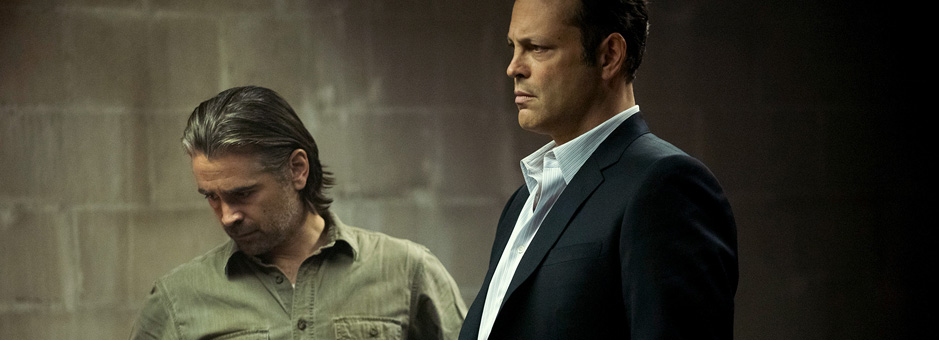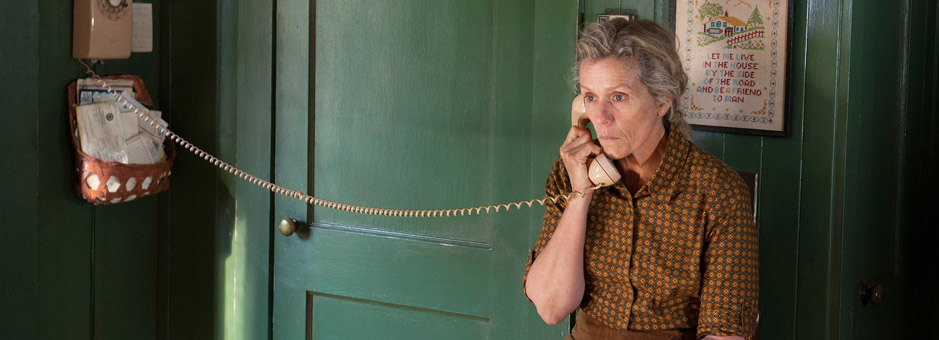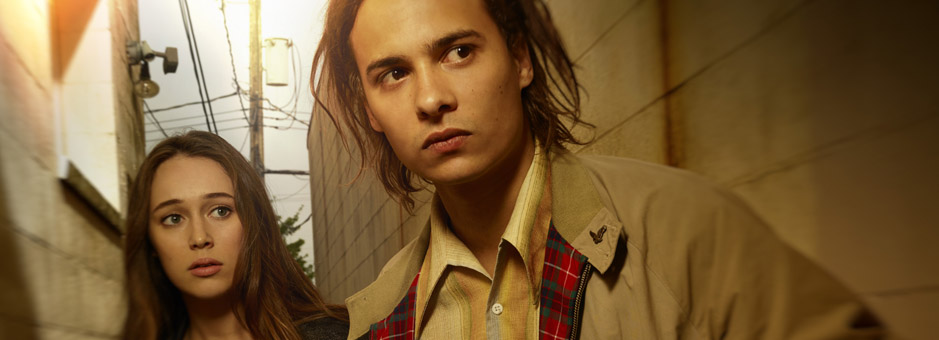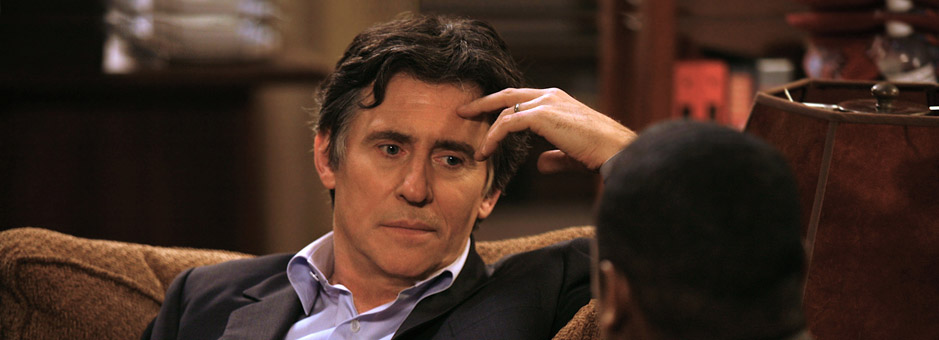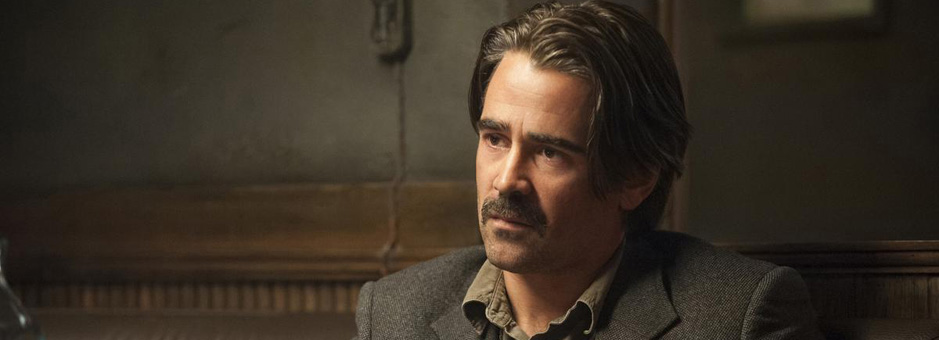Meet The Colourist
Pankaj Bajpai
Senior Colourist & SVP Business Innovation, Deluxe’s Encore Hollywood
Deluxe’s Encore Hollywood offers file-based post production services, including 4K workflows and near-set dailies, along with high calibre visual effects for many high-profile TV productions. Pankaj Bajpai has been an integral part of the team at Encore Hollywood for over 15 years.
How did you make your start in colour?
I started out shooting documentaries for the Discovery Channel, NHK and others in the early 1990s. I was fortunate to be able to work with the brilliant photographer-turned-colourist Fritz Roland in Washington DC. Fritz was Nixon's photographer on his first trip to China. He had shot a great many iconic images and he showed me how much of his talent as a photographer could be applied to colour grading.
As I segued into becoming a colourist myself, he was a mentor to me. He showed me how much creative input a good colourist can contribute to the image.
What sort of content do you work on nowadays? What draws you to these projects?
I work on all different types of series and movies for television and streaming. I've coloured stylised shows like True Detective and Fear the Walking Dead as well as more of what you'd call straightforward dramas such as Olive Kitteridge and In Treatment, which get emotional power entirely from the things that the characters say.
The approach to colouring different types of shows varies, just as the way they're written, performed and shot varies. I'm drawn to shows that affect me in some way but I'm not married to any particular look.
How many projects do you work on simultaneously?
It depends. I'm usually involved with quite a few shows in various stages at any one time. I might be talking to a DP about his or her overall ideas for a show or working on helping set up looks and LUTs for dailies. Then we typically get two to three days to finish an episode, so I'm obviously spending a lot of time in my theatre here at Encore actually doing that and then screening the work for the clients and receiving feedback.
Can you describe your facilities and everyday processes?
Encore is a part of Deluxe dedicated entirely to TV content – network, cable and streaming. We have a massive infrastructure and facilities throughout the country, and the world, and that allows us to serve productions wherever they are.
There are too many to name really but just to mention a couple: I was very involved in designing the workflow for the series House of Cards and I've worked on every episode of Fear the Walking Dead. Those are both shows that are quite demanding on both an artistic and technical level.
Since I started working with Baselight, I've found that the way it's laid out is perfect for me. It allows me to do a number of complex corrections very quickly, which is extremely important, especially on a TV schedule where speed is the key. I've also been very happy with the level of support that FilmLight as a company has provided. If I'm trying to achieve an effect for the filmmakers that requires going deep into the guts of the system, FilmLight has always been eager to help us do whatever needs to be done.
Can you tell us more about your experience grading True Detective?
At the earliest stages of pre-production, the series creators wanted to achieve a specific look and wanted to explore whether shooting 35mm film or ARRIRAW would best help them realise that vision of a hot, urban Los Angeles. So they shot a significant amount of test material both ways and then we worked in Baselight to take the images through a complete grade. It was a fascinating study. We all liked aspects of the film version – the response curve, the organic feel of real grain – but shooting the ARRIRAW format with vintage anamorphic lenses and then centre-extracting the image also had some advantages, both in other aspects of the image itself and also in terms of the practicality of shooting.
The upshot was that they shot digitally and with the help of FilmLight's Peter Postma, head of FilmLight North America, we built tools to bring a powerful film look to the images – something far more elaborate and organic-feeling than previously available methods.
On top of that, I also used several toolsets such as colour suppression matrices and blend operators in Baselight to further refine that look globally before even starting on the shot-to-shot grading process.
Due to a very tight schedule we finished the 10 hours of content – conform, VFX, colour and all other deliverables – in less than two months! This was an amazing feat, especially given the complexity of the project. A very big part of that was the result both of Deluxe's powerful infrastructure and of FilmLight's support.
What were the key challenges for you on this series and how did Baselight help you overcome these?
One of the most enjoyable scenes for me was the gunfight sequence in episode four, which was shot over five days and on five cameras – three ALEXAs and two REDs. This was incredibly interesting to grade as I had to match the footage from all five cameras, which were swiveling around in all different directions. It was challenging, but great fun.
Another challenge on a full drama series is having to handle masses of image data in a very short time period. Shooting in ARRIRAW meant we were probably handling around 70 terabytes per episode. To get through all this content, and particularly to feed editorial quickly, the workflow included dailies colourist, Jason Altman, who worked at Encore Hollywood using the latest FilmLight Daylight system.
Jason was doing six to eight hours of dailies a night, which is a huge amount. With Daylight handling complex looks at the very beginning of the process we were able to go beyond a simple dailies grade and implement the look of the show onset, then track all Jason’s grades back into Baselight. Using Baselight Grade Files (BLG files) for metadata exchange between dailies and final finish was really useful.
How would you define your personal style of grading?
I think to have a personal style as a colourist might be a bit limiting. Every show is unique. I generally get overall ideas about a show's look from the director of photography, producers and directors. And then I respond to the material. I'm going to approach the grading of a wide exterior of a futuristic city differently from the way I would a tight close-up of a character revealing a dark secret.
To me the first pass, generally working with primary correction, is really where the look is created. That's where you see if each shot is working as it should and where scenes work as a whole and then how episodes flow together. Obviously, secondaries, matte keys, windows and all the rest are incredibly important, but I think it's a mistake to focus too much on those tools to the detriment of that first pass.
How does the collaborative process between yourself and the cinematographers work?
It depends but I try to get involved as early as possible - when looks are discussed and LUTs created to be used to define how the filmmakers see the images on set and in dailies. In the end, it really boils down to an intuitive understanding of the creative intent and how to maintain its consistency episode after episode for a long period of time.
What advice would you give to people interested in becoming a colourist?
My generation of colourists started out either assisting an established colourist or working in other capacities at a post-production company, grabbing every opportunity to learn and build up some kind of a reel. The industry is changing in a lot of ways and there are fewer opportunities at major companies than there were. But there are also more ways to learn and practice colour grading than there were then.
The bottom line is that however you climb that ladder, you need to be able to demonstrate that you can be trusted with the responsibility of finishing somebody's show or movie or commercial. You need to have the eye, the technical understanding and the ability to collaborate that makes a successful colourist. And if you get that far, you need to work and work and grade thousands of hours of material to really hone your craft.
Can you tell us about grading in HDR? Can you reference any examples?
The important thing about grading for HDR - that sounds very simple, but actually presents some extremely complex issues - is the fact that you're grading the same images for display on devices with very different characteristics. It's a serious mistake to think that you can just mathematically "translate" an image from say ITU 709 into HDR and you have the "same" image with more contrast.
Say you have a couple making love in a bed. The table lamp is the brightest thing in the shot but by the nature of the display device and 709, it's not distracting your eye from the actors. Now, let's say you use an algorithm to put the equivalent scene on an HDR monitor. Suddenly that table lamp is much, much brighter than the couple. Maybe you can see more detail, you can see the filament in the bulb, but it's so powerful on the screen that your attention is drawn away from the couple entirely. What you have now is a very different image.
So what I do is I make use of the stereoscopic toolset in Baselight and send the "left eye" to an HD monitor and "right eye" to HDR monitor. And then using a series of techniques, I find the HDR image that has the same intent as the HD one.
Moving from HD to HDR space can often change the aesthetic intent of a shot and part of the colourist's job in mastering for both is to find the aesthetic equivalent, which is often quite different than the mathematical one.
I have quite a few but I think we all are especially formed by our earliest inspiration and for me those were from European cinema, particularly from the 60s and 70s. Growing up in India it so happened that my early experience with non-Indian films was at the French, German and American embassies, where I saw the work of people like the directors Ingmar Bergman, Stanley Kubrick and Francois Truffaut and cinematographers Sven Nykvst and Néstor Almendros, and so many others who had such a profound effect on filmmaking at the time. My impressions of those films still resonate with me today.
What do you like to do after you have been in a darkened room all day?
What is a dark room for everybody else isn't really a dark room for me. The dark walls cease to be when you're focused on pictures. And when I'm done with the pictures, I swim.
Join In
If you want to participate in our MTC programme, we'd love to hear from you. Contact:
Alexa Maza
e: [email protected]
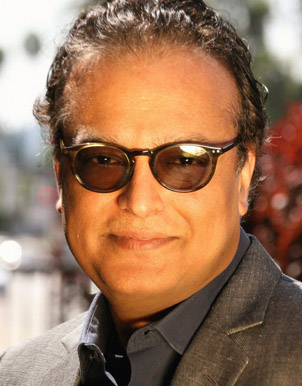
“Part of the colourist's job in mastering for both HD and HDR is to find the aesthetic equivalent of a shot, which is often quite different than the mathematical one.”
Details
Colourist: Pankaj Bajpai
Role: Senior Colourist & SVP Business Innovation
w: Deluxe’s Encore Hollywood




